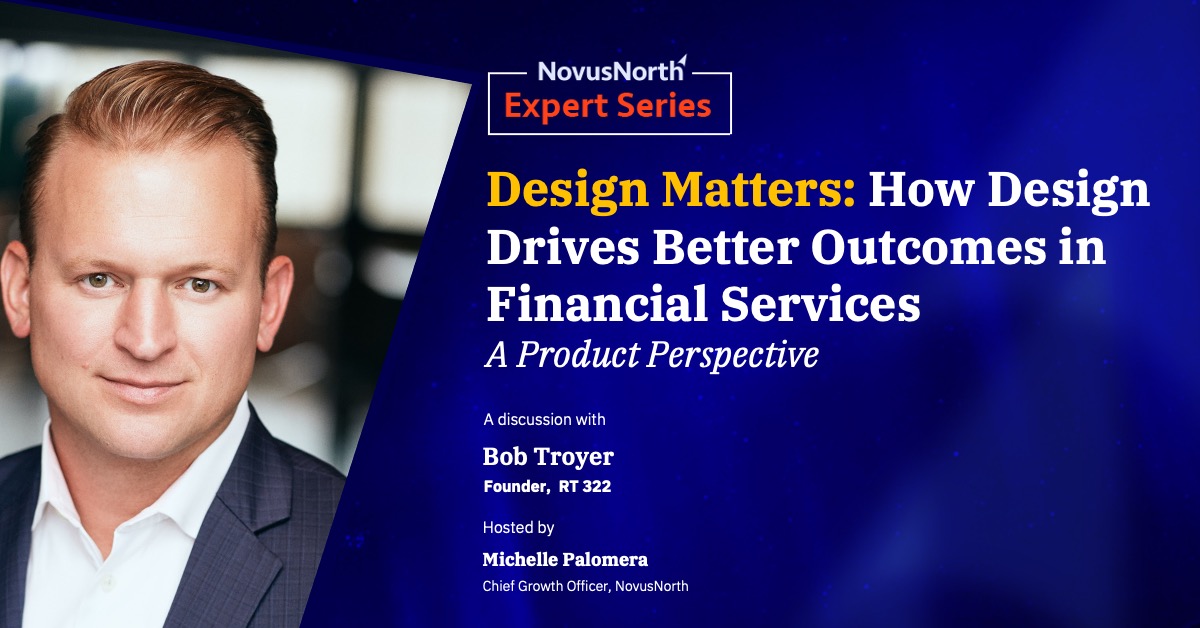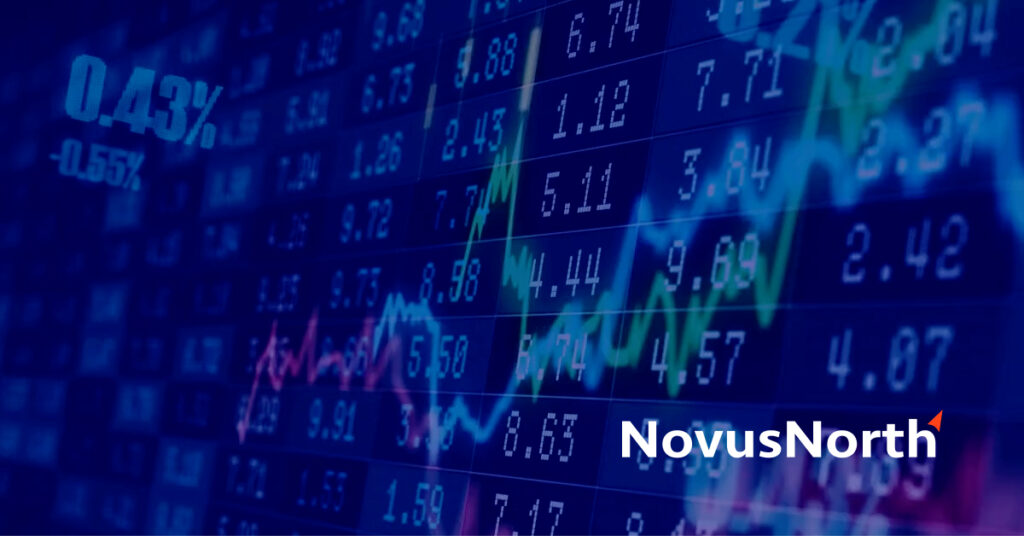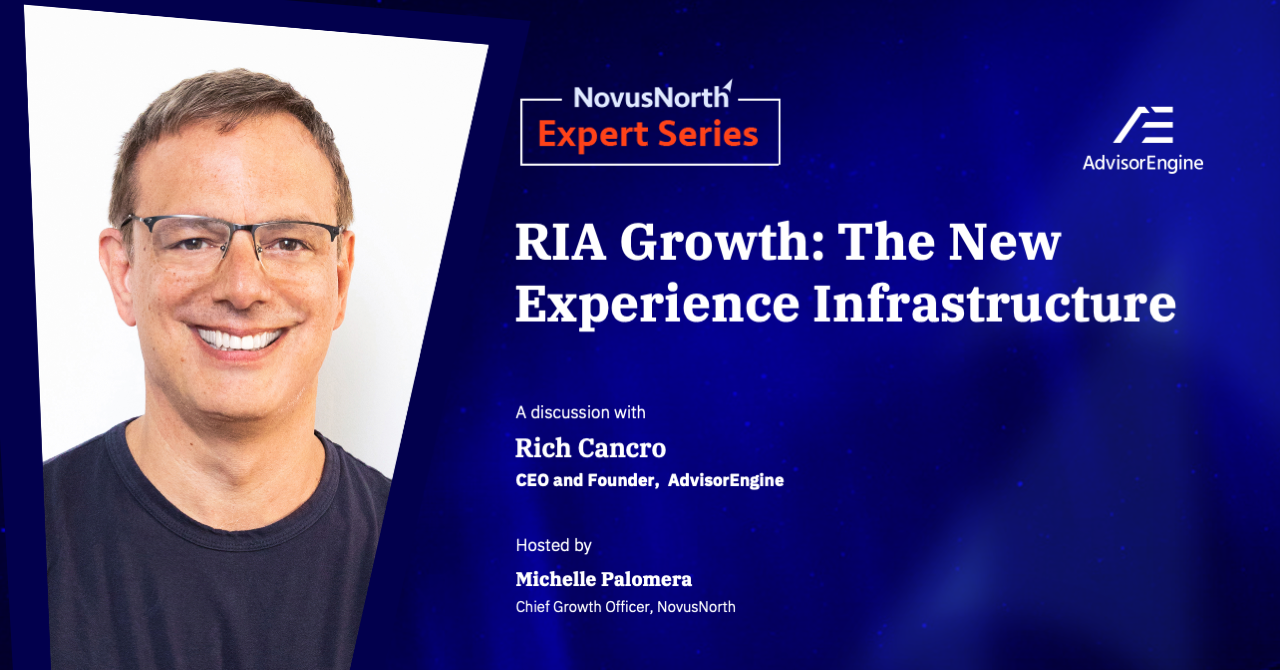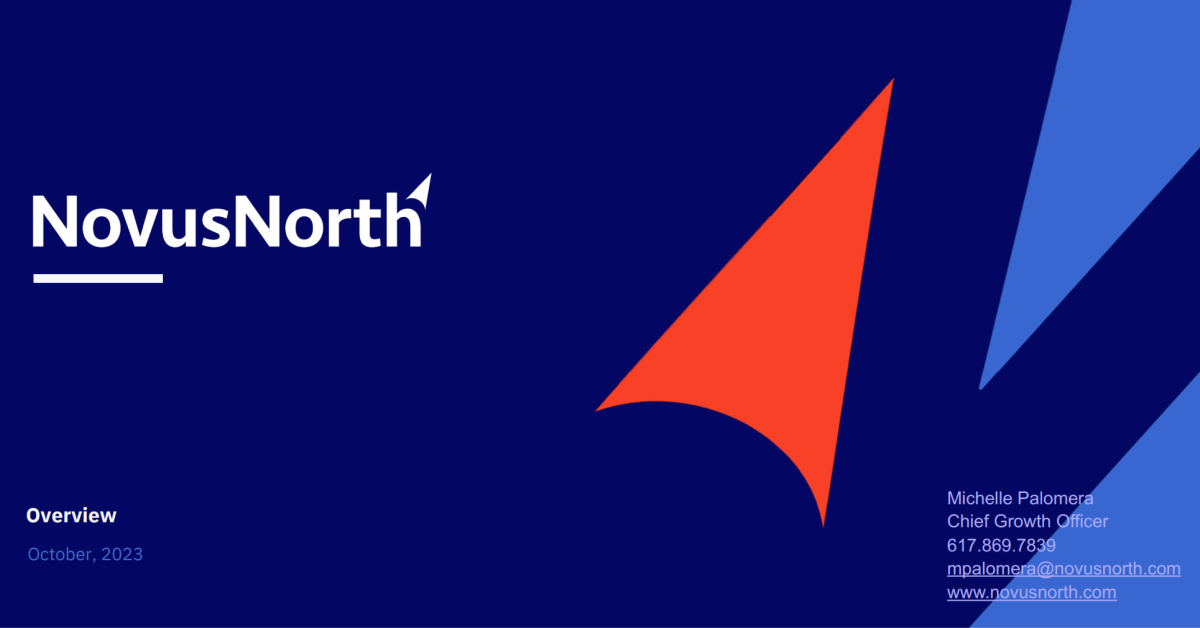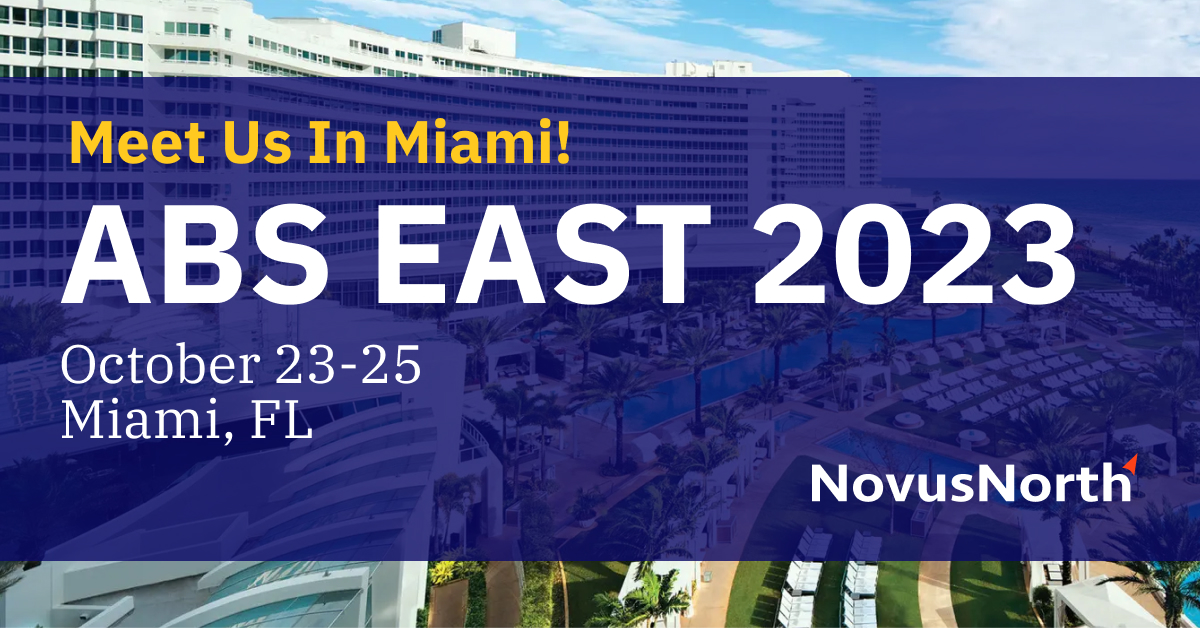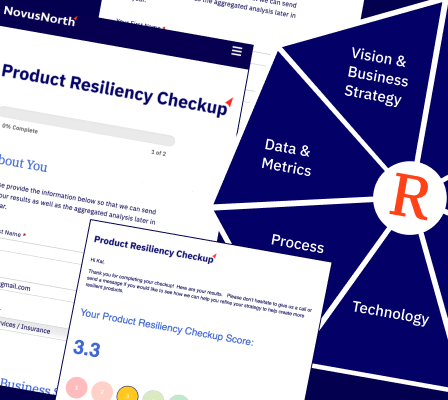In this edition of NovusNorth’s thought leadership conversation, Michelle Palomera, NovusNorth’s Chief Growth Officer, had an opportunity to speak with Bob Troyer. Bob is the founder of RT 322, where he provides fractional Chief Product Officer services and is a seasoned expert in digital product management with over two decades of experience in financial services. He excels in driving strategic initiatives from ideation to execution and is recognized for transforming digital customer experiences for a range of clients, including FinTechs, banks, and asset managers. Prior to RT 322, Bob led digital transformation efforts at such firms as U.S. Bank and SmartBiz Loans.
NovusNorth is a leading innovator in digital experience and platforms for the financial services industry and provides product management, user experience design, and development services.
Key Takeaways:
In this article, we summarize the conversation between Bob Troyer and Michelle Palomera
Read the Transcript
Michelle Palomera
I’m looking forward to discussing how design can drive better outcomes, which is the title and focus of our talk today. To open with here is we’re seeing a lot of companies who have grown large design teams starting to reorganize those teams. They’re starting, not just with layoffs, but also starting to decentralize those teams – there’s a lot going on. Often, we see design teams get farmed out as individual resources to product teams versus being an integral part of the product strategy. I’d love to hear some of your thoughts and stories on this topic. So, my first question is: How can designers become more strategic partners?
“The data that we got from that research was critical and it provided the foundation for our strategy not just for the next few months, but for the next few years.”
– Bob Troyer
“The data that we got from that research was critical and it provided the foundation for our strategy not just for the next few months, but for the next few years.”
– Bob Troyer
Bob Troyer
It’s a great question. And my opinion goes back to my early days in product. I was a business strategy expert when I led my first digital project at U.S. Bank, back in the day. We needed to create a client portal to close a competitive gap, and also help streamline and automate a lot of the workflows that we had with our clients. I didn’t have a lot of experience, but we needed to lay out a vision of the future for the portal. Luckily, our leadership brought in a UX design firm while I was learning on the job. As a part of that, I was paired with a UX leader from that firm who was an excellent researcher and storyteller. She really pushed the value of research and casting a wide net across businesses and doing a large eight-to-12-week research initiative, even though I was anxious to get started on the design of a portal that I had already imagined in my own head. The data that we got from that research was critical and it provided the foundation for our strategy not just for the next few months, but for the next few years. It really helped us understand what was unique and shared across different businesses and personas. It allowed us to chunk things out into themes and phases. That vision that we laid out – it underpinned a portal that helped us increase market share by 40% the year we launched. That was an impressive result for a first attempt at a portal. It was a pivotal lesson right off the bat on how designers can strategically influence product outcomes through comprehensive research and storytelling.
Michelle Palomera
Just to comment on the research process that we used for those viewers who might not be familiar with user centered design approaches. What we do is contextual research. It’s observational in nature, it’s unstructured, it’s to observe the user in their environment, in the flow of work, doing the tasks that they’re trying to do so that we can pick up on where we can digitize, where we can automate, where the data is needed, and some of those more behavioral types of requirements. It’s really exciting when we see our clients and their clients participate in this type of research and the feedback we get. I recall, Bob, I think it was Wellington Management on the asset management side and DTCC on the market participant side; they really enjoyed just being included in this part of the design and product development process. It ultimately improved the overall client relationship that you had with them. So, there’s a lot of benefit to that.
Bob, just building on that, can you share a little more about what some of the additional value was and what were some of the specific insights you gained?
“It made them feel heard. They could see that we were serious about doing something different because we had UXers in the field and nobody else had done anything like that before”
– Bob Troyer
“It made them feel heard. They could see that we were serious about doing something different because we had UXers in the field and nobody else had done anything like that before.”
– Bob Troyer
Bob Troyer
That’s a great point on clients being excited about the approach. It made them feel heard. They could see that we were serious about doing something different because we had UXers in the field, and nobody else had done anything like that before. As part of that effort, design captured concrete examples of where our technology and our competitors’ technology were really falling short, as well as what was most important to fix now versus later. They had the quotes, the notes, the recordings, the analysis, the findings, and the recommendations. It was clear to us from doing the research that we could differentiate ourselves if we didn’t create another version of Excel on the on the web. Applications at the time had 50 different tabs, and you had to hunt and peck and be a power user to know how to find the data and features you needed. That was falling short. So instead, we were going to create something that was simple and elegant and allowed the user to navigate through the site with confidence and control. And we were going to focus on a few critical features that were really important, especially in those initial phases, and do those things really well. Some of those things are table stakes, like document management and reporting. Some of them were differentiators; our customized dashboard was very different. Our toolkit, which was something that was pinned to the bottom of the browser with global features, like total asset exposure and data comparison tools really helped with reconciliation process, which was a real big pain point for our customers. So, when you put all that together, we had a really compelling product when we launched, and that user centered approach was really at the foundation of finding those insights that led to that product. It wasn’t just that the product was successful, but it really transformed our brand’s perception and the market, positioning us as a tech innovator.
Michelle Palomera
That’s amazing. It’s very difficult to do in some of the more complex B2B segments of financial services for sure. There’s definitely some magic that has to come into play, when you balance the art of design and the science of technology to come up with that elegant solution that works. Working with a talented experienced team is really important when you’re working with these complex types of products.
Switching gears here, I think some firms worry that taking this type of user centered approach can slow down the product development process and slow up the product launches. So, we’ve often been asked to just do something quick and dirty, so we can get it handed over to developers without doing that research or iterating in the design process. Can you comment on how design can actually help build things faster and better?
Bob Troyer
I think every business leader has a little bit of impatience in them, so it’s not surprising to hear that. But in a perfect world, every product design and development process should have ample time and resources dedicated to doing a comprehensive research project, like the one that I was just talking about, ensuring that you design and build things in an optimal, scalable way from the outset. However, real world scenarios might necessitate a faster, quick and dirty approach, like you’re saying, perhaps through some sort of proof of concept. This can be useful for testing new ideas rapidly – things that you aren’t ready to commit to right out of the gate, or when you’re constrained by time and costs. I think this is where it’s really important, especially if you have experienced product owners, designers, and engineers, with domain expertise, they know not just the systems and the design, but they also understand the business well, that’s really key in these scenarios and you can get away with maybe taking a few shortcuts, so to speak. Design plays a key role; they need to be knowledgeable, flexible, and willing to take in a lot of new information coming in from a lot of different experts and iterate on prototypes to quickly get to something that can be built and tested in the market. So, it’s doable. But as a leader, you need to do that with your eyes wide open and leverage that iteration as a research project in and of itself and use it to guide whether or not you want to fully commit to that direction. It’s also crucial to be aware that approaches like that often accrue technical debt, which requires time and effort to address in subsequent phases when you’re commercializing the product, which is a necessary tradeoff for speed in this type of scenario but acknowledging it and planning for it will ensure a better long-term outcome.
Michelle Palomera
Bob, that was very insightful. I think you mentioned scaling earlier. On that point, can you talk a little bit about how design can actually help teams scale and how can it enable the reduction of that technical debt?
“Scaling from a design perspective really starts with creating that modular design system, a collection of components and standards…that need to be compatible with the existing ecosystem and easily adapted as the platform evolves.”
– Bob Troyer
“Scaling from a design perspective really starts with creating that modular design system, a collection of components and standards…that need to be compatible with the existing ecosystem and easily adapted as the platform evolves.”
– Bob Troyer
Bob Troyer
Scaling from a design perspective really starts with creating that modular design system, a collection of reusable components and standards. In your tech stack, for any platform, you want reusable components in each one of the layers – these are vital in building scalable products. These components need to be compatible with the existing ecosystem and easily adapted as the platform evolves. On the design side, documenting these design system components and standards is especially critical for large complex financial services platforms. If you’ve worked at any large institution in financial services, you’re certainly familiar with all the complexity, especially once you start integrating with the rest of that ecosystem that’s necessary to get the data and features to clients that you want. So, high level, I think design systems are great because:
- Efficiency: You can apply preexisting components that speed up new projects by avoiding reinventing the wheel every time you want to build a similar feature.
- Cost effective: Reusing components avoids supporting multiple versions of the same type of thing, the same type of functions, which reduces your maintenance costs.
- Agility: When you want to make changes, you can propagate those changes quickly and efficiently throughout the system by making one change once and spreading it throughout the system.
- Consistency: Ensuring uniformity and look and feel and interactions and behaviors. That helps create a great customer experience.
- Scalability: Reusing those components that are already optimized and tested for other use cases. And then building on top of those enhances your ability to scale.
- Streamlines onboarding: It can take designers weeks instead of months, if you have everything documented, to get onboarded. It helps with your UI developers as well.
- Reduced Miscommunication: A shared design language also minimizes errors and confusion among team members. Whether it’s within a functional team or if it’s cross functional, if everybody’s speaking the same language, you can have a lot more success.
Michelle Palomera
We’ve definitely seen a lot of clients who have invested in creating design systems. One of the best success stories I’ve seen in the last few years has been with one of our large banking clients, who was able to measure over $15 million in savings in capital budget, that they would have otherwise spent on development, within the first year of launching their new design system, which NovusNorth helped to create. Two things they did that were really important. One, out of the gate, they thoughtfully selected their initial feeder applications, where we were harvesting patterns from those projects first, for modernization and redesign. Second, they put an approach in place to really manage the design system like a product itself, so they had funding to have a team to maintain it and work with the other business lines and stakeholders to ensure that it was getting rolled out, was maintained, there was version control, etc. They also had various code bases for the components, which is important when you have a large enterprise that maintains many platforms across multiple different technologies.
Bob Troyer
To give credit to U.S. Bank, we had our system with Pivot and in my last few years at the bank, they, at an enterprise level, had gone to a strategy of managing the overall design system as a product. I think that is paying off huge dividends for the bank.
Michelle Palomera
You mentioned design principles before and I recall in the program that we helped you on that a big part of the strategy was creating design principles. We often hear about more general guiding principles at the program level, but design principles themselves aren’t always used as that north star. Can you talk a little bit about how you created design principles, what they actually were, and how they were used for your initiative?
“We wanted to be the user’s thoughtful friend. Our clients were busy, and the application is one of many tools they use.”
– Bob Troyer
“We wanted to be the user’s thoughtful friend. Our clients were busy, and the application is one of many tools they use.”
– Bob Troyer
Bob Troyer
It is interesting that they are not prioritized or shared out as much with stakeholders when these design principles are driving how your customers are interacting with your institution, especially now in the digital age. We took them very seriously. Our design principles were focused, thoughtful, and consistent. The design leaders on our team came up with those and they were crucial in in shaping the platform.
Focused: We aim to simplify the complex. For instance, we incorporated a clear hierarchy throughout the system, using whitespace effectively and displaying information and tools contextually when it made sense. That minimized the cognitive load on a user, whether they’re in an individual page or navigating throughout the system.
Thoughtful: We wanted to be the user’s thoughtful friend. Our clients were busy, and the application is one of many tools that they use. We wanted to do some of the thinking for them and offer digital services like notification features, that were smart and could notify them to help them get through their day and let them know when something changed in their portfolio that they should be aware of it.
Consistent: Consistency was key from look and feel, to interactions, transitions, and navigation. Whether you’re logging in, or you’re on the dashboard, or you’re in a cash management feature, or trading tool, and everything in between, you wanted that to be uniform, making the application easy to comprehend and use.
Adhering to these principles led to better decision making from a team standpoint, less waste and fostered trust with our users; they can rely on our application and our brand, even as a platform evolved and grew over time.
Michelle Palomera
How about a final tip, Bob, or story. I’m thinking about innovation. By nature, design is supposed to be bringing innovation into a program. But how do you keep that going? And how do you have non-designers embrace innovation, too?
“If you have talented people and they have this environment with creative friction, you’ll be well-positioned to create something great.”
– Bob Troyer
“If you have talented people and they have this environment with creative friction, you’ll be well-positioned to create something great.”
– Bob Troyer
Bob Troyer
Designers foster innovation by having a strong point of view and communicating clearly and challenging the business, product owners, and engineering teams to prioritize the right solution for our clients and our business over the easy one, which a lot of times can be some sort of copycat of what already exists out there today. To sustain this innovative culture, especially in today’s rapidly evolving environment with AI and machine learning, practices like regular ideation workshops, fostering a culture of open feedback, and encouraging diversity of thought can be crucial. Diversity of thought, within functional teams or cross-functionally, is critical as is making sure that designers have a voice at the table in all phases of the product lifecycle. And designers can facilitate a lot of this. They can drive a lot of these methods, and those methods promote a creative friction, leading to richer ideas and better solutions. This isn’t kind of a one-time effort. It’s an ongoing thing that requires a leadership commitment to having that friction, to having that openness, and to having an environment that learns from failures and successes and creates this innovation flywheel that builds momentum over time. If you have talented people and they have this environment with creative friction, you’ll be well-positioned to create something really great.
Michelle Palomera
So true, you definitely need to have that creative friction, as you mentioned, and need to have that trust across the team so that everybody’s confident and asking each other the tough questions. I think a lot of firms develop a culture of avoidance and they don’t enable team members to have that friction in a productive way. And their end products and client experiences definitely suffer. One thing that we like to do is create immersive ideation sessions as a way to kick-off projects, but also as a way to keep cross functional teams aligned and thinking about innovation throughout a project. So, we use ideation throughout the entire product design and development process. That’s the best practice that we have at NovusNorth. But Bob, maybe we you and I should create an ideation process that takes place on tiki boat tour. What do you think?
Bob Troyer
Cruising tiki’s and ideation that sounds like an excellent plan for success.
Michelle Palomera
Well, Bob, I think you’ve given our audience a lot to think about today and some great examples I hope everyone can use. Thank you for your time. And for our viewers, please let us know if you’d like to join the conversation and if you have any questions we would love to help so just reach out.
Bob Troyer
Great to see you Michelle, and thanks for having me.
About The Experts
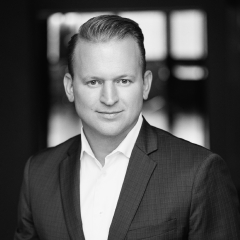
Bob Troyer
Founder of RT 322
Bob Troyer, founder of RT 322, is a seasoned expert in digital product management with over two decades of experience in financial services. Bob has excelled in driving strategic initiatives from ideation to execution and is recognized for transforming digital customer experiences for a wide range of clients, including small businesses, banks, investors, and asset managers.
Before establishing RT 322, Bob took on diverse roles spanning analytics, relationship management, sales, and strategy, before discovering his passion in product management in 2011. His experience includes work at well-respected institutions like Sidley Austin, LaSalle Bank, Bank of America, U.S. Bank, and SmartBiz Loans.
An alumnus of Northwestern University, Bob graduated in June 2001 with a B.A. in Economics and became a CFA charter holder in June 2007. In addition to his professional achievements, Bob serves as a Keystone Board Member for the Shirley Ryan AbilityLab, renowned as the premier physical rehabilitation hospital in the U.S.
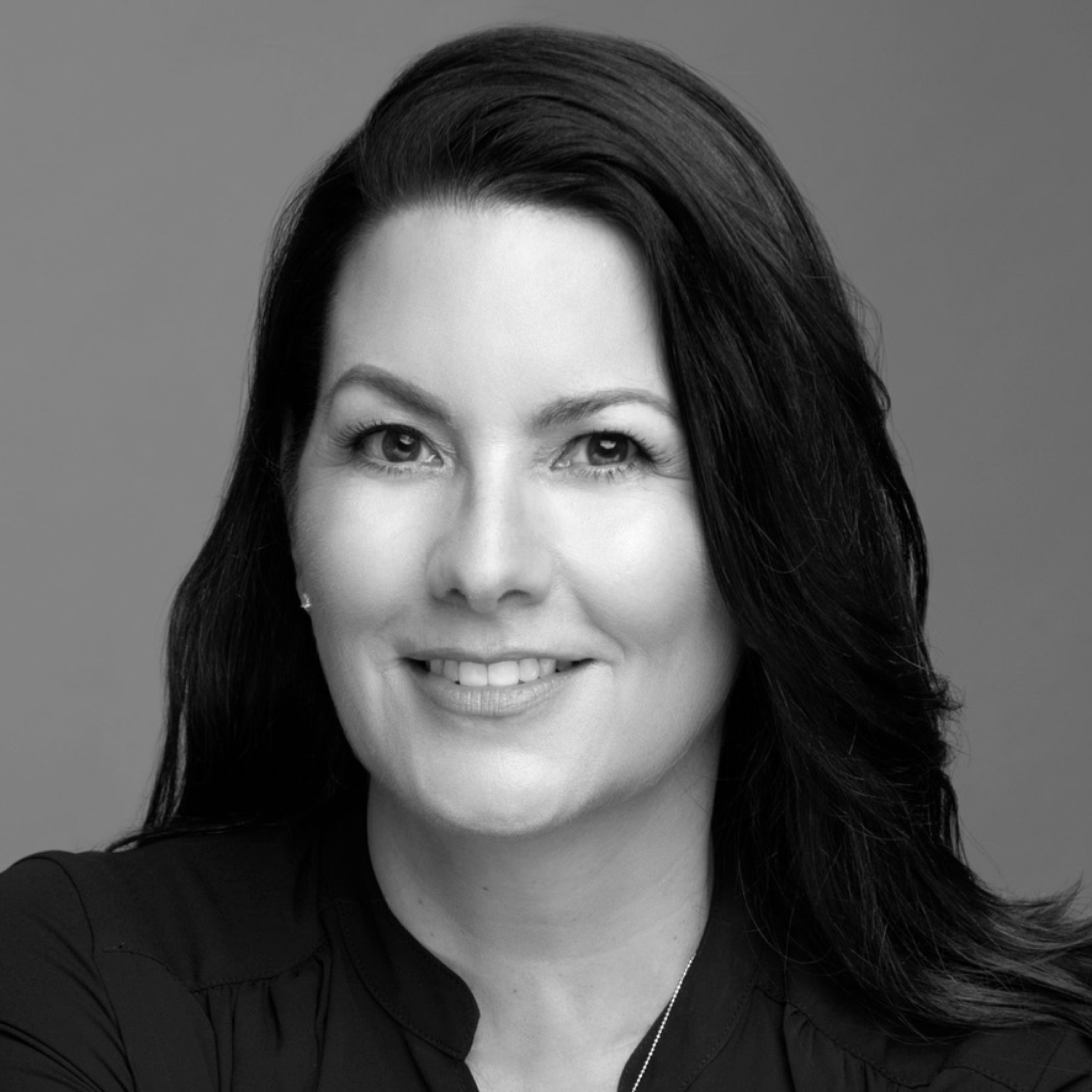
Michelle Palomera
Chief Growth Officer, NovusNorth
With an extensive career in design, technology and consulting for 30 years, Michelle has helped global firms develop and create market-leading and award-winning digital products and customer experiences. A former leader in several start-ups and public firms herself, Michelle has also led various acquisition, integration and strategic partnership initiatives.
In this edition of NovusNorth’s thought leadership conversation, Michelle Palomera, NovusNorth’s Chief Growth Officer, had an opportunity to speak with Bob Troyer. Bob is the founder of RT 322, where he provides fractional Chief Product Officer services and is a seasoned expert in digital product management with over two decades of experience in financial services. He excels in driving strategic initiatives from ideation to execution and is recognized for transforming digital customer experiences for a range of clients, including FinTechs, banks, and asset managers. Prior to RT 322, Bob led digital transformation efforts at such firms as U.S. Bank and SmartBiz Loans.
NovusNorth is a leading innovator in digital experience and platforms for the financial services industry and provides product management, user experience design, and development services.
Key Takeaways:
In this article, we summarize the conversation between Bob Troyer and Michelle Palomera
Read the Transcript
Michelle Palomera
I’m looking forward to discussing how design can drive better outcomes, which is the title and focus of our talk today. To open with here is we’re seeing a lot of companies who have grown large design teams starting to reorganize those teams. They’re starting, not just with layoffs, but also starting to decentralize those teams – there’s a lot going on. Often, we see design teams get farmed out as individual resources to product teams versus being an integral part of the product strategy. I’d love to hear some of your thoughts and stories on this topic. So, my first question is: How can designers become more strategic partners?
“The data that we got from that research was critical and it provided the foundation for our strategy not just for the next few months, but for the next few years.”
– Bob Troyer
“The data that we got from that research was critical and it provided the foundation for our strategy not just for the next few months, but for the next few years.”
– Bob Troyer
Bob Troyer
It’s a great question. And my opinion goes back to my early days in product. I was a business strategy expert when I led my first digital project at U.S. Bank, back in the day. We needed to create a client portal to close a competitive gap, and also help streamline and automate a lot of the workflows that we had with our clients. I didn’t have a lot of experience, but we needed to lay out a vision of the future for the portal. Luckily, our leadership brought in a UX design firm while I was learning on the job. As a part of that, I was paired with a UX leader from that firm who was an excellent researcher and storyteller. She really pushed the value of research and casting a wide net across businesses and doing a large eight-to-12-week research initiative, even though I was anxious to get started on the design of a portal that I had already imagined in my own head. The data that we got from that research was critical and it provided the foundation for our strategy not just for the next few months, but for the next few years. It really helped us understand what was unique and shared across different businesses and personas. It allowed us to chunk things out into themes and phases. That vision that we laid out – it underpinned a portal that helped us increase market share by 40% the year we launched. That was an impressive result for a first attempt at a portal. It was a pivotal lesson right off the bat on how designers can strategically influence product outcomes through comprehensive research and storytelling.
Michelle Palomera
Just to comment on the research process that we used for those viewers who might not be familiar with user centered design approaches. What we do is contextual research. It’s observational in nature, it’s unstructured, it’s to observe the user in their environment, in the flow of work, doing the tasks that they’re trying to do so that we can pick up on where we can digitize, where we can automate, where the data is needed, and some of those more behavioral types of requirements. It’s really exciting when we see our clients and their clients participate in this type of research and the feedback we get. I recall, Bob, I think it was Wellington Management on the asset management side and DTCC on the market participant side; they really enjoyed just being included in this part of the design and product development process. It ultimately improved the overall client relationship that you had with them. So, there’s a lot of benefit to that.
Bob, just building on that, can you share a little more about what some of the additional value was and what were some of the specific insights you gained?
“It made them feel heard. They could see that we were serious about doing something different because we had UXers in the field and nobody else had done anything like that before”
– Bob Troyer
“It made them feel heard. They could see that we were serious about doing something different because we had UXers in the field and nobody else had done anything like that before.”
– Bob Troyer
Bob Troyer
That’s a great point on clients being excited about the approach. It made them feel heard. They could see that we were serious about doing something different because we had UXers in the field, and nobody else had done anything like that before. As part of that effort, design captured concrete examples of where our technology and our competitors’ technology were really falling short, as well as what was most important to fix now versus later. They had the quotes, the notes, the recordings, the analysis, the findings, and the recommendations. It was clear to us from doing the research that we could differentiate ourselves if we didn’t create another version of Excel on the on the web. Applications at the time had 50 different tabs, and you had to hunt and peck and be a power user to know how to find the data and features you needed. That was falling short. So instead, we were going to create something that was simple and elegant and allowed the user to navigate through the site with confidence and control. And we were going to focus on a few critical features that were really important, especially in those initial phases, and do those things really well. Some of those things are table stakes, like document management and reporting. Some of them were differentiators; our customized dashboard was very different. Our toolkit, which was something that was pinned to the bottom of the browser with global features, like total asset exposure and data comparison tools really helped with reconciliation process, which was a real big pain point for our customers. So, when you put all that together, we had a really compelling product when we launched, and that user centered approach was really at the foundation of finding those insights that led to that product. It wasn’t just that the product was successful, but it really transformed our brand’s perception and the market, positioning us as a tech innovator.
Michelle Palomera
That’s amazing. It’s very difficult to do in some of the more complex B2B segments of financial services for sure. There’s definitely some magic that has to come into play, when you balance the art of design and the science of technology to come up with that elegant solution that works. Working with a talented experienced team is really important when you’re working with these complex types of products.
Switching gears here, I think some firms worry that taking this type of user centered approach can slow down the product development process and slow up the product launches. So, we’ve often been asked to just do something quick and dirty, so we can get it handed over to developers without doing that research or iterating in the design process. Can you comment on how design can actually help build things faster and better?
Bob Troyer
I think every business leader has a little bit of impatience in them, so it’s not surprising to hear that. But in a perfect world, every product design and development process should have ample time and resources dedicated to doing a comprehensive research project, like the one that I was just talking about, ensuring that you design and build things in an optimal, scalable way from the outset. However, real world scenarios might necessitate a faster, quick and dirty approach, like you’re saying, perhaps through some sort of proof of concept. This can be useful for testing new ideas rapidly – things that you aren’t ready to commit to right out of the gate, or when you’re constrained by time and costs. I think this is where it’s really important, especially if you have experienced product owners, designers, and engineers, with domain expertise, they know not just the systems and the design, but they also understand the business well, that’s really key in these scenarios and you can get away with maybe taking a few shortcuts, so to speak. Design plays a key role; they need to be knowledgeable, flexible, and willing to take in a lot of new information coming in from a lot of different experts and iterate on prototypes to quickly get to something that can be built and tested in the market. So, it’s doable. But as a leader, you need to do that with your eyes wide open and leverage that iteration as a research project in and of itself and use it to guide whether or not you want to fully commit to that direction. It’s also crucial to be aware that approaches like that often accrue technical debt, which requires time and effort to address in subsequent phases when you’re commercializing the product, which is a necessary tradeoff for speed in this type of scenario but acknowledging it and planning for it will ensure a better long-term outcome.
Michelle Palomera
Bob, that was very insightful. I think you mentioned scaling earlier. On that point, can you talk a little bit about how design can actually help teams scale and how can it enable the reduction of that technical debt?
“Scaling from a design perspective really starts with creating that modular design system, a collection of components and standards…that need to be compatible with the existing ecosystem and easily adapted as the platform evolves.”
– Bob Troyer
“Scaling from a design perspective really starts with creating that modular design system, a collection of components and standards…that need to be compatible with the existing ecosystem and easily adapted as the platform evolves.”
– Bob Troyer
Bob Troyer
Scaling from a design perspective really starts with creating that modular design system, a collection of reusable components and standards. In your tech stack, for any platform, you want reusable components in each one of the layers – these are vital in building scalable products. These components need to be compatible with the existing ecosystem and easily adapted as the platform evolves. On the design side, documenting these design system components and standards is especially critical for large complex financial services platforms. If you’ve worked at any large institution in financial services, you’re certainly familiar with all the complexity, especially once you start integrating with the rest of that ecosystem that’s necessary to get the data and features to clients that you want. So, high level, I think design systems are great because:
- Efficiency: You can apply preexisting components that speed up new projects by avoiding reinventing the wheel every time you want to build a similar feature.
- Cost effective: Reusing components avoids supporting multiple versions of the same type of thing, the same type of functions, which reduces your maintenance costs.
- Agility: When you want to make changes, you can propagate those changes quickly and efficiently throughout the system by making one change once and spreading it throughout the system.
- Consistency: Ensuring uniformity and look and feel and interactions and behaviors. That helps create a great customer experience.
- Scalability: Reusing those components that are already optimized and tested for other use cases. And then building on top of those enhances your ability to scale.
- Streamlines onboarding: It can take designers weeks instead of months, if you have everything documented, to get onboarded. It helps with your UI developers as well.
- Reduced Miscommunication: A shared design language also minimizes errors and confusion among team members. Whether it’s within a functional team or if it’s cross functional, if everybody’s speaking the same language, you can have a lot more success.
Michelle Palomera
We’ve definitely seen a lot of clients who have invested in creating design systems. One of the best success stories I’ve seen in the last few years has been with one of our large banking clients, who was able to measure over $15 million in savings in capital budget, that they would have otherwise spent on development, within the first year of launching their new design system, which NovusNorth helped to create. Two things they did that were really important. One, out of the gate, they thoughtfully selected their initial feeder applications, where we were harvesting patterns from those projects first, for modernization and redesign. Second, they put an approach in place to really manage the design system like a product itself, so they had funding to have a team to maintain it and work with the other business lines and stakeholders to ensure that it was getting rolled out, was maintained, there was version control, etc. They also had various code bases for the components, which is important when you have a large enterprise that maintains many platforms across multiple different technologies.
Bob Troyer
To give credit to U.S. Bank, we had our system with Pivot and in my last few years at the bank, they, at an enterprise level, had gone to a strategy of managing the overall design system as a product. I think that is paying off huge dividends for the bank.
Michelle Palomera
You mentioned design principles before and I recall in the program that we helped you on that a big part of the strategy was creating design principles. We often hear about more general guiding principles at the program level, but design principles themselves aren’t always used as that north star. Can you talk a little bit about how you created design principles, what they actually were, and how they were used for your initiative?
“We wanted to be the user’s thoughtful friend. Our clients were busy, and the application is one of many tools they use.”
– Bob Troyer
“We wanted to be the user’s thoughtful friend. Our clients were busy, and the application is one of many tools they use.”
– Bob Troyer
Bob Troyer
It is interesting that they are not prioritized or shared out as much with stakeholders when these design principles are driving how your customers are interacting with your institution, especially now in the digital age. We took them very seriously. Our design principles were focused, thoughtful, and consistent. The design leaders on our team came up with those and they were crucial in in shaping the platform.
Focused: We aim to simplify the complex. For instance, we incorporated a clear hierarchy throughout the system, using whitespace effectively and displaying information and tools contextually when it made sense. That minimized the cognitive load on a user, whether they’re in an individual page or navigating throughout the system.
Thoughtful: We wanted to be the user’s thoughtful friend. Our clients were busy, and the application is one of many tools that they use. We wanted to do some of the thinking for them and offer digital services like notification features, that were smart and could notify them to help them get through their day and let them know when something changed in their portfolio that they should be aware of it.
Consistent: Consistency was key from look and feel, to interactions, transitions, and navigation. Whether you’re logging in, or you’re on the dashboard, or you’re in a cash management feature, or trading tool, and everything in between, you wanted that to be uniform, making the application easy to comprehend and use.
Adhering to these principles led to better decision making from a team standpoint, less waste and fostered trust with our users; they can rely on our application and our brand, even as a platform evolved and grew over time.
Michelle Palomera
How about a final tip, Bob, or story. I’m thinking about innovation. By nature, design is supposed to be bringing innovation into a program. But how do you keep that going? And how do you have non-designers embrace innovation, too?
“If you have talented people and they have this environment with creative friction, you’ll be well-positioned to create something great.”
– Bob Troyer
“If you have talented people and they have this environment with creative friction, you’ll be well-positioned to create something great.”
– Bob Troyer
Bob Troyer
Designers foster innovation by having a strong point of view and communicating clearly and challenging the business, product owners, and engineering teams to prioritize the right solution for our clients and our business over the easy one, which a lot of times can be some sort of copycat of what already exists out there today. To sustain this innovative culture, especially in today’s rapidly evolving environment with AI and machine learning, practices like regular ideation workshops, fostering a culture of open feedback, and encouraging diversity of thought can be crucial. Diversity of thought, within functional teams or cross-functionally, is critical as is making sure that designers have a voice at the table in all phases of the product lifecycle. And designers can facilitate a lot of this. They can drive a lot of these methods, and those methods promote a creative friction, leading to richer ideas and better solutions. This isn’t kind of a one-time effort. It’s an ongoing thing that requires a leadership commitment to having that friction, to having that openness, and to having an environment that learns from failures and successes and creates this innovation flywheel that builds momentum over time. If you have talented people and they have this environment with creative friction, you’ll be well-positioned to create something really great.
Michelle Palomera
So true, you definitely need to have that creative friction, as you mentioned, and need to have that trust across the team so that everybody’s confident and asking each other the tough questions. I think a lot of firms develop a culture of avoidance and they don’t enable team members to have that friction in a productive way. And their end products and client experiences definitely suffer. One thing that we like to do is create immersive ideation sessions as a way to kick-off projects, but also as a way to keep cross functional teams aligned and thinking about innovation throughout a project. So, we use ideation throughout the entire product design and development process. That’s the best practice that we have at NovusNorth. But Bob, maybe we you and I should create an ideation process that takes place on tiki boat tour. What do you think?
Bob Troyer
Cruising tiki’s and ideation that sounds like an excellent plan for success.
Michelle Palomera
Well, Bob, I think you’ve given our audience a lot to think about today and some great examples I hope everyone can use. Thank you for your time. And for our viewers, please let us know if you’d like to join the conversation and if you have any questions we would love to help so just reach out.
Bob Troyer
Great to see you Michelle, and thanks for having me.
About The Experts

Bob Troyer
Founder of RT 322
Bob Troyer, founder of RT 322, is a seasoned expert in digital product management with over two decades of experience in financial services. Bob has excelled in driving strategic initiatives from ideation to execution and is recognized for transforming digital customer experiences for a wide range of clients, including small businesses, banks, investors, and asset managers.
Before establishing RT 322, Bob took on diverse roles spanning analytics, relationship management, sales, and strategy, before discovering his passion in product management in 2011. His experience includes work at well-respected institutions like Sidley Austin, LaSalle Bank, Bank of America, U.S. Bank, and SmartBiz Loans.
An alumnus of Northwestern University, Bob graduated in June 2001 with a B.A. in Economics and became a CFA charter holder in June 2007. In addition to his professional achievements, Bob serves as a Keystone Board Member for the Shirley Ryan AbilityLab, renowned as the premier physical rehabilitation hospital in the U.S.

Michelle Palomera
Chief Growth Officer, NovusNorth
With an extensive career in design, technology and consulting for 30 years, Michelle has helped global firms develop and create market-leading and award-winning digital products and customer experiences. A former leader in several start-ups and public firms herself, Michelle has also led various acquisition, integration and strategic partnership initiatives.
Let’s Talk!
Trying to find your new north? Get in touch to find out how we can work together to achieve the business outcomes you need.
Our Latest Insights
Founder and CEO, Rich Cancro, shares how AdvisorEngine applies their guiding principles of Personal, Scientific and Beautiful to create a world-class wealth management platform for Registered Independent Advisors.
By NovusNorth
A high-level over view of our financial services experience and capabilities. We deliver digital experiences. World class experiences that drive business outcomes for the financial services industry.
By NovusNorth
We will be showcasing our team’s experience in designing and building platforms spanning the value chain in structured finance and capital markets from onboarding and account opening to funding, securitization, trading, portfolio management, administration, servicing and trust/custody.
By NovusNorth
